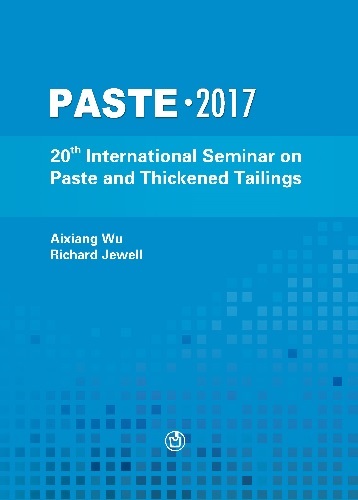Reliability analysis and design of backfill in a cut-and-fill mining method

|
Authors: Deng, J |
DOI https://doi.org/10.36487/ACG_rep/1752_30_Deng
Cite As:
Deng, J 2017, 'Reliability analysis and design of backfill in a cut-and-fill mining method', in A Wu & R Jewell (eds), Paste 2017: Proceedings of the 20th International Seminar on Paste and Thickened Tailings, University of Science and Technology Beijing, Beijing, pp. 268-276, https://doi.org/10.36487/ACG_rep/1752_30_Deng
Abstract:
In underground mining, hydraulic backfill materials, such as waste tailings, river sand, and cement, are often used to fill underground mined stopes. In cut-and-fill mining methods with blasthole stoping and delayed backfill, after extraction of adjacent pillars that contain economic minerals, the backfill is often subject to exposure of free standing on at least one side. A key concern for mining engineers is the stability of this immediately-bordered backfill body, because the backfill stability has a significant effect on the dilution/loss rate and the safety of mining operations. It is found that backfill stability is one of the mining subjects most dominated by uncertainty. Rock and backfill properties, environmental conditions, and analytical models are such factors contributing to uncertainty. Conventional methods simplified the problem by considering the uncertain parameters to be deterministic, and accounted for the uncertainties through the use of empirical factors of safety. This paper aims to conduct stability analysis of backfill in underground mining using a probabilistic reliability method, which is an extension of conventional deterministic methods. The parameters of backfill properties are modelled as random variables. In order to determine the failure probability of the backfill in a cut-and-fill mining method of an underground mine in China, a three-dimensional wedge model is set up for the backfill and a corresponding limit state function is established to characterize the backfill stability for the purpose of reliability analysis. The influences of the mean values, coefficients of variation, probability distribution types, and correlation between random variables are carefully investigated through sensitivity analysis. The results obtained give insights into the mechanism of backfill stability and could provide some useful clues on how to choose the right backfill materials.
References:
Darling, P. 2011, ‘SME mining engineering handbook, third edition’, Society for Mining, Metallurgy, and Exploration, Inc.
Deng, J., Gu, D.S., Li, X.B. and Peng, H.S. 1999, ‘Energy and numerical solution to backfill critical height in non-pillar continuous mining’, Transactions of Nonferrous Metals Society of China, vol. 9, no. 4, pp. 847-851.
Deng, J., Gu, D.S., Li, X.B. and Yue, Z.Q. 2005, ‘Structural reliability analysis for implicit performance function using artificial neural network’, Structural Safety, vol. 25, no. 1, pp. 25-48.
Haldar, A. and Mahadevan, S. 2000, ‘Probability, reliability, and statistical methods in engineering design’, Bautechnik, vol. 75, no. 5, pp. 379.
Lu, P. 1994, ‘Some problems of backfill mechanics to bewilder the development of pasted backfill mining methods’, Gold, no. 7, pp. 21-24.
© Copyright 2024, Australian Centre for Geomechanics (ACG), The University of Western Australia. All rights reserved.
View copyright/legal information
Please direct any queries or error reports to repository-acg@uwa.edu.au
View copyright/legal information
Please direct any queries or error reports to repository-acg@uwa.edu.au